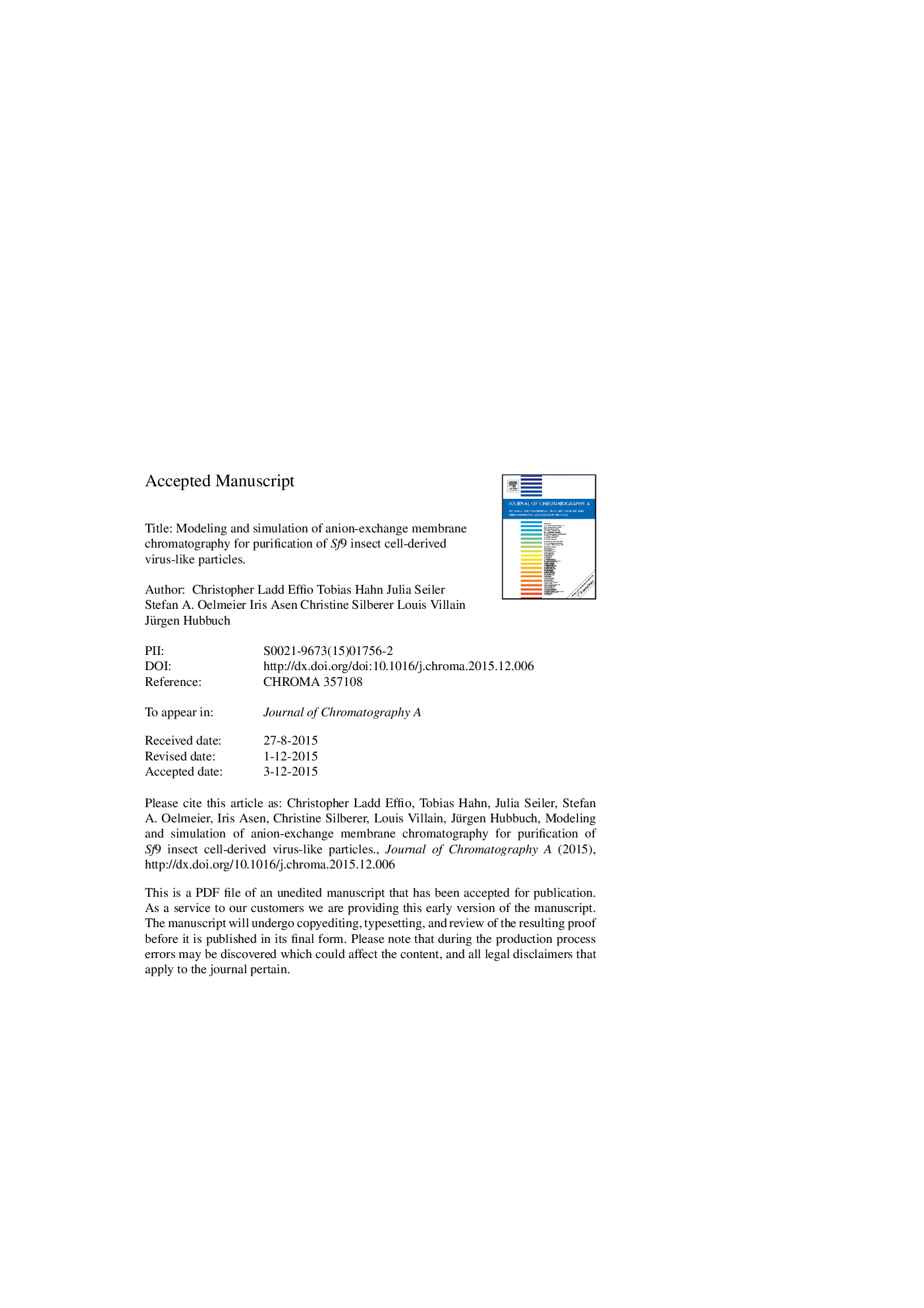| Article ID | Journal | Published Year | Pages | File Type |
|---|---|---|---|---|
| 7610484 | Journal of Chromatography A | 2016 | 35 Pages |
Abstract
Recombinant protein-based virus-like particles (VLPs) are steadily gaining in importance as innovative vaccines against cancer and infectious diseases. Multiple VLPs are currently evaluated in clinical phases requiring a straightforward and rational process design. To date, there is no generic platform process available for the purification of VLPs. In order to accelerate and simplify VLP downstream processing, there is a demand for novel development approaches, technologies, and purification tools. Membrane adsorbers have been identified as promising stationary phases for the processing of bionanoparticles due to their large pore sizes. In this work, we present the potential of two strategies for designing VLP processes following the basic tenet of 'quality by design': High-throughput experimentation and process modeling of an anion-exchange membrane capture step. Automated membrane screenings allowed the identification of optimal VLP binding conditions yielding a dynamic binding capacity of 5.7Â mg/mL for human B19 parvovirus-like particles derived from Spodoptera frugiperda Sf9 insect cells. A mechanistic approach was implemented for radial ion-exchange membrane chromatography using the lumped-rate model and stoichiometric displacement model for the in silico optimization of a VLP capture step. For the first time, process modeling enabled the in silico design of a selective, robust and scalable process with minimal experimental effort for a complex VLP feedstock. The optimized anion-exchange membrane chromatography process resulted in a protein purity of 81.5%, a DNA clearance of 99.2%, and a VLP recovery of 59%.
Keywords
Related Topics
Physical Sciences and Engineering
Chemistry
Analytical Chemistry
Authors
Christopher Ladd Effio, Tobias Hahn, Julia Seiler, Stefan A. Oelmeier, Iris Asen, Christine Silberer, Louis Villain, Jürgen Hubbuch,
